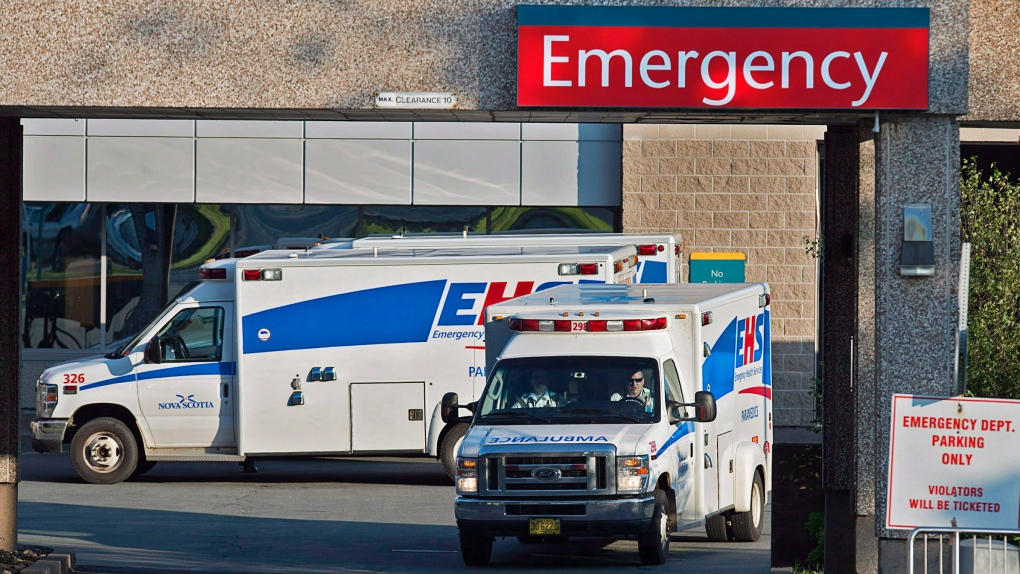Last December, Charlene Snow, 67, waited seven hours in the Nova Scotia Hospital emergency room before giving up and going home – without seeing a doctor.
Less than an hour later, he died.
While a tragedy, Snow’s case was even more horrific as the events leading to his death spread across the country.
The number of Canadians who visit emergency rooms across the country only to give up and leave before receiving treatment has more than quintupled, according to new data compiled by CTV News.
This problem is coded by hospital emergency departments as “LWBS” – “invisible” patients due to long wait times caused by emergency room overcrowding and understaffing.
“A lot of the conditions that we’re concerned about are what we call time sensitivity,” Dr. Eddie Lange, an emergency room specialist in Alberta, told CTV National News. “If there is a significant delay, the patient’s treatment will be much worse.
“But more importantly, it is not a quality service when people wait for long periods of time and then have to go home because the wait is unacceptable. »
Data from the Canadian Institute for Health Information (CIHI) show that 184,753 people went to emergency rooms for help in 2003-2004, then left without medical care other than an initial consultation with a nurse. Over the next two decades, this figure increased each year, except for a slight decline in 2020-2021, when Canadians generally avoided emergency room visits at the start of the pandemic.
In the most recent data available, CIHI reports that there were more than 14 million hospital visits in 2022 and that 963,637 patients simply left before receiving care. This means that the number of patients discharged without receiving any service is five times higher than the number recorded in 2003.
Lisa Salamon, an emergency room doctor in Scarborough, Ont., found the numbers “astounding” when she first heard them.
“It’s a very significant number and very concerning because there are certainly patients who needed emergency care and were sent home,” he told CTV National News.
Although doctors have been warning for years about the enormous strain on the health care system, most doctors fail to understand the sheer number of patients who leave hospitals without receiving help on a daily basis.
“We’re doing our job and we don’t know how many people are leaving without being seen,” Salamon said.
When a patient presents to the emergency department, they will first be assessed to see if they need immediate care – for example, someone having a heart attack will be seen within minutes, regardless of the number of people waiting.
But those whose symptoms don’t seem too serious may have to wait hours. Waiting times are becoming too long for patients.
The consequences of not going to the emergency room can be enormous, says Dawn Pita, an emergency room nurse in Lethbridge, Alberta.
“This worries me because some people who leave may not know how sick they are and leaving may be a bad choice,” Peta, co-president of the National Association of Emergency Nurses, wrote in an email. email.
“Leaving may or may worsen the conditions that may have caused you to enter.”
When Snow was taken to the emergency room at the Cape Breton Regional Hospital last winter, he was suffering from jaw pain and flu-like symptoms. He died at home due to a buildup of fluid around his heart, which could have been treated if he had been able to see an emergency doctor.
CIHI data for 2021-2022 means that one in 14 patients are left without treatment. There is no doubt that other ticking time bombs like Snow are among them.
“There’s a lot of things that people might find, for them it’s like, ‘Okay, I want to check it out,’ and then after waiting a few hours they’re like, ‘I can’t be bothered.’ again, I’m just going to do this and go home,” Salamon said, without doing any important tests to reassure them that everything was okay, without arranging, perhaps, any follow-up that might be necessary, or without discovering certain things. it could threaten their lives.
Doctor: It will take political will to stop the ship from sinking
Data from the National Ambulatory Care Reporting System (NACRS) shows that between April 2022 and March 2023, the most recent annual data, more than 15.1 million unplanned emergency room visits were reported in Canada, or an increase from the 14 million reported in 2020. 2021 – 2022.
This means that the number of visits has returned to pre-pandemic volumes, with approximately 15.1 million emergency room visits in 2019-2020. But the health system in 2024 is very different from that of 2019.
Trevor Ginn, an emergency room doctor, told CTV National News that there is a misconception that it is the influx of patients showing up to emergency departments with minor problems that causes emergency rooms to become overcrowded .
“That’s not true,” he said. “The hospital is full – we do not have space to transfer patients being treated from the emergency department to other facilities. As a result, the waiting room is blocked and we cannot reach these patients in time.
Doctors reported that the number of hospital beds was insufficient and that many hospitals were operating at 100% capacity.
“We need to keep our hospitals at occupancy levels that prevent emergency departments from becoming unsafe places,” Lang said. “This means that when we identify patients who need to come to the hospital, whether they have a hip fracture, pneumonia, a heart attack or appendicitis, they cannot stay in the emergency room for hours or even days. days.
Without the staff capacity and space to transfer patients to other departments, doctors couldn’t do anything, said Lang, professor and chair of emergency medicine at the Cumming School of Medicine. University of Calgary.
“Until our healthcare system can move treated patients to higher levels, we will continue to see a disproportionate number of invisible patients. »
It’s a problem politicians should try to solve, Lang said, but the crisis is sadly absent from many policy discussions.
“This is, or should be, a political issue. The proportion of the provincial budget devoted to health services is very significant. “That number is over 40 or 50 percent,” he said.
“Taxpayers have the right, given the amount they spend in taxes, to demand a high-quality health care system. »
Lang said Canadians should press their representatives for answers.
“We must ask our politicians to answer what they will do to deal with the current situation, (where) the safety net in the form of emergency units is operating at a sub-optimal level due to this that happened.”
The majority of patients who leave the emergency department without being seen “usually fall into the low-risk group,” where their lives were put at risk because they did not receive emergency care, Lang said .
“These side effects are relatively rare, although they do occur, and that may not be the reason this is getting attention,” he said.
“(But) people don’t come to the emergency room for non-essential reasons.”
The percentage of patients who leave without receiving services is a sign of overcrowding and staffing shortages in a healthcare organization. In an average hospital, this figure should be less than 1 percent.
“We want the number to be zero. “Some emergency departments on the East Coast this summer reported ‘invisible exit’ rates as high as 40 percent,” Dr. Trevor Ginn, an emergency room physician, told CTV National News. patients who sign up to see an emergency doctor leave due to wait times, lack of resources, or (a) hospitals are full.
When presented with new data showing a five-fold increase, the federal health minister’s office did not address the growing number of Canadians leaving emergency departments without receiving treatment, but said in a statement that he knew Canadians were concerned about wait times. .
“Canadians told us they were concerned about increasing wait times in emergency rooms – we heard it loud and clear,” the statement said. “That’s why we will invest nearly $200 billion in health services in Canada over the next 10 years. More than $46 billion of this new funding is allocated to specific bilateral agreements with each province and territory so they can invest in their health system needs. “
The Canadian Association of Emergency Physicians (CAPE) is deeply concerned.
“We recognize that patients who leave emergency departments without care pose a significant risk to their health,” the organization wrote in a statement. “Addressing the root cause is essential to patient safety. »
They called for the creation of a national urgent care forum to tackle the underlying problem and prevent patients leaving hospital without the care they need.

“Professional communicator. General music practitioner. Passionate organizer. Evil twitter fan.”






